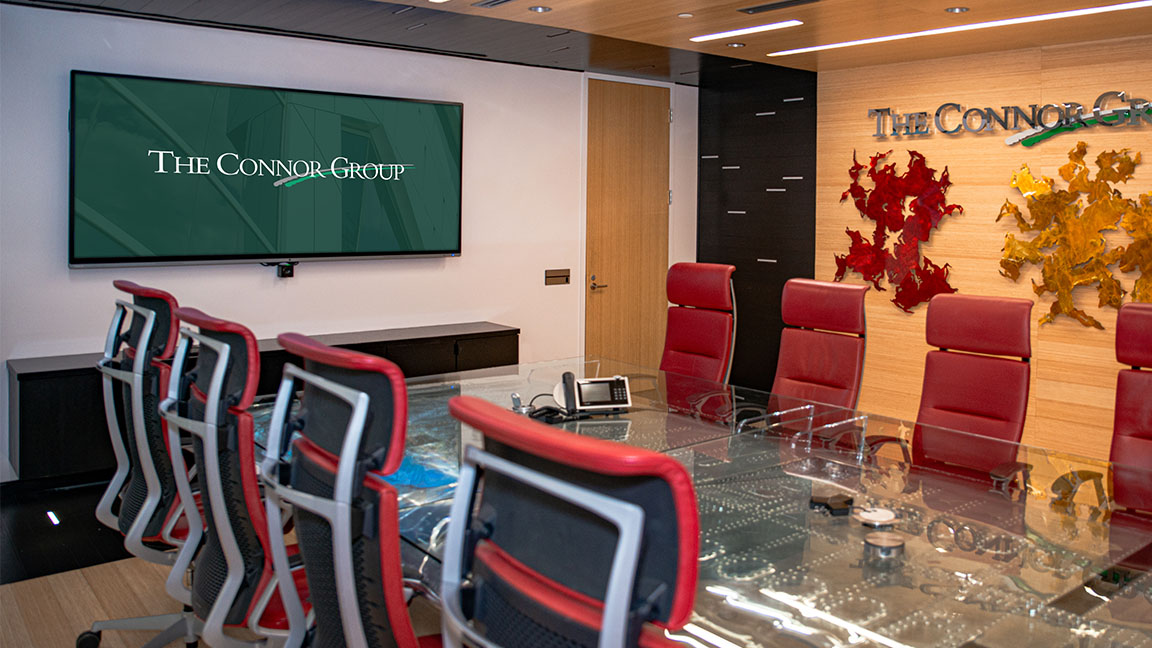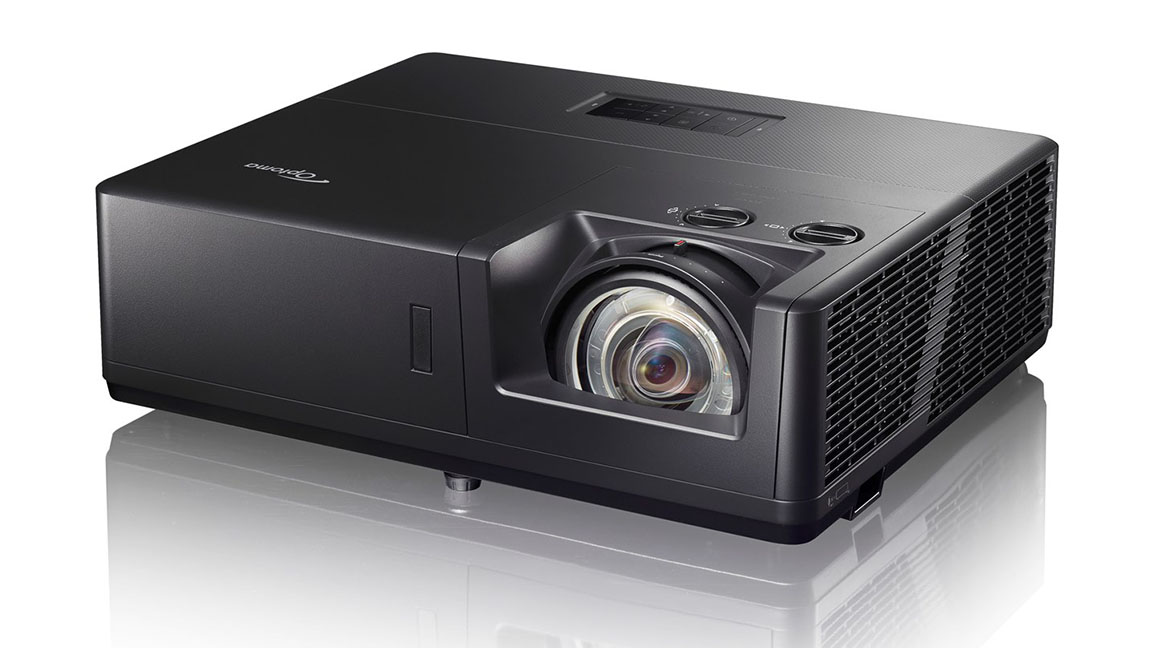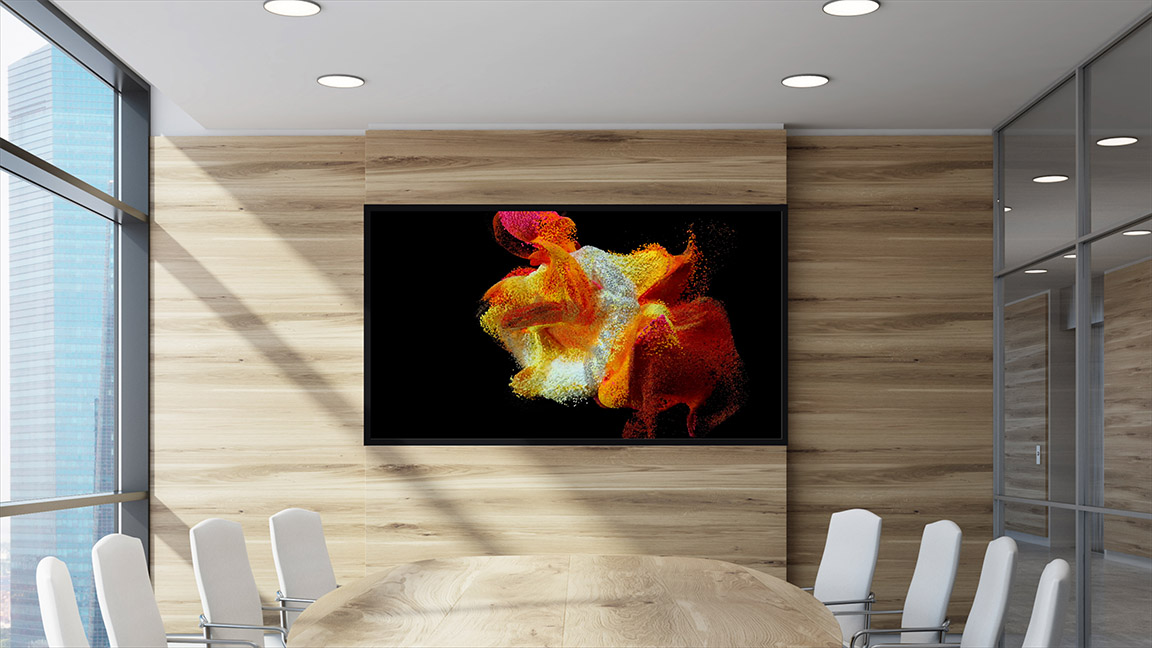
As organizations continue to grapple with how to optimize their real estate under the hybrid work model, the opportunity for on-site technology to accommodate a more flexible way of working is strong. A core component of this is video display systems—and the good news is that clients want more of them.
[Viewpoint: Exploring the 5 Pillars of the New Workplace Paradigm]
“It is a tremendously expanding market,” said Mary Landis, vice president of enterprise sales at Avidex, an AV design and integration firm headquartered in Cary, NC. “The smartphone revolutionized our industry because everybody expects to be able to touch it and get the answer that they’re looking for. The natural technology evolution is such that people want to see monitors everywhere.”
Projection Options
Where corporate AV used to focus on the boardroom, now it’s extended to ad-hoc meeting hotspots in open offices, huddle spaces, elevators, and lobbies. And while presentation and collaboration may be the primary use cases, displays are also being leveraged for wayfinding, in addition to serving as art pieces designed to impress those visiting a corporate campus.
“That expanded use of especially touch displays—as well as monitors and technology of all sizes—has really helped drive price points down,” Landis said. Those lower prices, in turn, have contributed to increased adoption.
[Classroom Projectors: What You Need to Know for the First Day of School]
Projection technology continues to do a good job of addressing challenges related to corporate conference room and meeting space design, noted Jason Young, national sales manager for professional display solutions at Sony. “With flexibility in room layout, projectors seamlessly accommodate various spatial constraints, from compact huddle rooms to expansive boardrooms,” he said.
Depending on the client’s budget, projectors can also be a more cost-effective option over larger dvLED, LED, or video walls. Landis said clients who require larger images—but who don’t have the budget for dvLED—are turning to projection technology. She cited multipurpose spaces and training rooms as two examples where projectors remain a strong presence. Corporate lobbies and immersive environments are other areas for which these systems are well-suited.

“With all the incredible lensing that’s now available to us," she added, "it has really opened up the opportunity for creative applications. We can really morph and change the size and dynamic of the installation. Projection is still very much a viable technology—and with screen materials advancements, it’s quite effective.”
Conference Room Choices
Selecting the best display type for a conference room is based on room size, required image quality, use case, and, of course, budget. For example, Young highlighted Sony’s BRAVIA LCD displays series, which offers models designed for small, medium, or large conference rooms that need high image quality and brightness. On the other hand, its dvLED Crystal LED displays are used in large conference rooms as backdrops for what he calls “state of the union-type" gatherings.
Similar to the variables involved in selecting display types, identifying the best aspect ratio for corporate campus displays comes down to the space—most notably, its size and layout. Budget, as always, remains a factor, as is what content will be presented on the screen not only today but in the future.
“When considering conference room applications, each display technology offers distinct advantages tailored to specific needs,” Young said. “Balancing performance, compatibility, and cost-effectiveness is crucial in selecting a display solution that best meets the needs of the conference room environment and its users.”
Landis believes that decisions around aspect ratios will be based increasingly on what collaboration platforms like Microsoft Teams and Zoom offer. “There’s quite a bit of buzz about [21:9] right now," she said, "but not yet widespread adoption, as companies are looking at the global standardization of: Are we building to 16:9? Are we building to dual screen? And what is the appropriate quantity of displays—and location of displays—in our meeting rooms?”

Interactive Display Best Practices
Touchscreens are a great way to drive collaboration between meeting participants, which can result in higher participation levels and overall engagement. Young noted that because multiple participants can manipulate content, they are a good tool for streamlining workflow.
For this to happen seamlessly, however, there are a few things to consider. “It’s critical to pick a touch-enabled display with responsiveness and touch accuracy to minimize frustration and poor user experience,” Young said. Screens should also receive the maintenance required to ensure that they’re clean and continue to perform well.
For Landis, room layout determines how successfully interactive displays will perform. “I have to make sure there’s room for folks to be able to stand up, walk around, get to a screen, and touch,” she explained.
Rooms must accommodate people of all shapes and sizes, she added, and the entire display must be accessible to all users, including those with limited mobility. “Workplace technology in general is all about making everyone a part of the workplace solution,” Landis said. “If folks are going to make the effort to go to the office, we have to make sure that they can use the technology.” After all, she added, if someone can’t reach the top square of the interactive display to close the application they’re using, “it’s not going to do you much good.”
[Supply Chain Lessons Learned]
There's also the need to drive adoption of interactive display technology through training. “You cannot just buy an interactive touchscreen, put it in a conference room where touch has never been used within an organization, and expect to get return on investment from your employees using it,” said Jeff Boggess, director of product marketing at Avocor. “It requires some type of training and onboarding for employees.”
For integrators, an understanding of how those employees could benefit from touch is essential in making the right recommendations. For example, what applications do members of the accounting department use daily, and how would they want to interact with them via touch during their meetings?
“Integrators [should] take the time to survey who they’re working with and ask: What are the different departments within your organization? What are their day-to-day tasks? And then understand use cases where touchscreens make sense,” Boggess advised.
“Projection is still very much a viable technology—and with screen materials advancements, it’s quite effective.”
Mary Landis, Avidex
When touchscreens do make sense, it’s necessary to understand how people will be using them, said Brian Soto, director of product management at Optoma. For example, will project teams require displays that support multiple touch? “If they don’t, do you need to consider an external computer that will be connected to the display to give you the software you need to interact and collaborate?” he asked.
Soto added that displays that incorporate cloud-based solutions require internet access; if wired internet connectivity isn’t available, the display will need to support a wireless card. For applications requiring more than one screen, it’s necessary to confirm that the displays will accommodate multiple screen collaboration.
Let's All Go to the Lobby
We all know what they say about first impressions—in the context of a corporate campus, the lobby serves to shape how customers and visitors perceive an organization. Some display installations are there to inform people about the company itself, while others help visitors navigate the facility. And then there are those that are designed to tap into our emotions. The question is: Can one display achieve all three?
Ideally, no, according to Landis. “The trend—when budget allows—is something that’s the wow factor,” she described. “There may be more detailed information at the receptionist’s desk. Wayfinding is going to be its own separate display and its own separate interface.”
One trend that Landis highlights is an increased demand for curved displays for lobby installations that are designed to impress those entering the building. “The ability for mount manufacturers and LED manufacturers to accommodate unusual shapes and textures in technology is an exciting development as we look at those one-off, attention-getting displays," she said.
Regardless of the size of the investment, the effectiveness of lobby displays depends on content. Landis underlines the importance of engaging with those in charge of content creation and management before specifying equipment. “When you’re focused on signage and you’re focused on communicating a message, you need to make sure that the stakeholder is involved in the process so that the technology you’re choosing best matches what the message is,” she said. “Ultimately, it’s about the message.”







